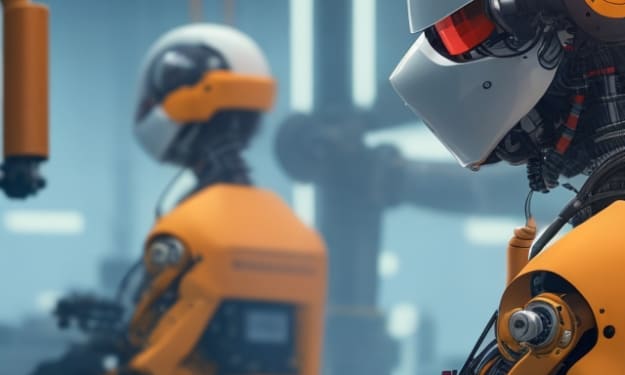Exploring the Potential of 3D Printing
From Prototyping to Manufacturing

Introduction
The world is witnessing a revolution that is reshaping the way we create and manufacture objects—3D printing. Also known as additive manufacturing, this groundbreaking technology has rapidly advanced from its humble beginnings as a prototyping tool to a powerful force capable of transforming entire industries. With its ability to materialize complex designs layer by layer, 3D printing is revolutionizing manufacturing processes, unlocking endless possibilities, and driving innovation across various sectors. In this article, we will delve into the potential of 3D printing and its journey from prototyping to full-scale manufacturing.
Prototyping: The Gateway to Innovation
Initially embraced as a rapid prototyping technique, 3D printing has dramatically accelerated the product development cycle. Traditionally, prototyping involved time-consuming and costly processes, such as CNC machining or injection molding, which often limited the number of iterations and increased time-to-market. With 3D printing, however, designers and engineers can quickly transform digital designs into physical prototypes, enabling faster iterations and enhanced collaboration.
The versatility of 3D printing allows for the creation of intricate and complex geometries that were previously unachievable. This freedom of design has sparked a wave of innovation, particularly in industries like aerospace, automotive, and healthcare. Engineers can now experiment with optimized designs, reducing weight while maintaining structural integrity, leading to more fuel-efficient aircraft, lighter and safer automobiles, and patient-specific medical implants.
The Evolution towards Manufacturing
While 3D printing initially served as a prototyping tool, advancements in materials and technology have propelled it into the realm of full-scale manufacturing. Traditional manufacturing techniques, such as subtractive manufacturing (e.g., milling or drilling), involve removing material from a solid block, resulting in significant waste and limited design possibilities. In contrast, 3D printing builds objects layer by layer, adding material where it is needed, minimizing waste, and enabling complex internal structures.
One of the key advantages of 3D printing in manufacturing is the ability to produce customized and on-demand products. This shift towards personalization has gained significant momentum across multiple sectors, ranging from consumer goods to healthcare. Customized consumer products, such as sneakers, jewelry, and eyewear, can now be tailored to individual preferences and needs. In healthcare, 3D printing has revolutionized prosthetics, dental aligners, and even patient-specific organ models for surgical planning, ultimately improving patient outcomes.
Furthermore, 3D printing has disrupted the supply chain and logistics landscape. With traditional manufacturing, components are often produced in one location and then shipped to assembly plants worldwide, leading to longer lead times, increased transportation costs, and inventory management challenges. 3D printing allows for decentralized production, enabling localized manufacturing, reducing transportation needs, and streamlining the supply chain. This approach also enables the creation of spare parts on demand, reducing downtime and eliminating the need for extensive warehousing.
Materials: Expanding Horizons
The advancements in 3D printing technologies have been accompanied by a vast expansion in the range of printable materials. Initially limited to plastics, the introduction of new materials, such as metals, ceramics, and composites, has broadened the applications of 3D printing across industries. Metal 3D printing, also known as additive metal manufacturing, has revolutionized the aerospace and automotive sectors by enabling the production of lightweight, high-strength components with complex geometries.
Moreover, the development of bio-compatible and bio-printable materials has opened up new frontiers in healthcare. Organ printing, for example, holds the potential to revolutionize transplantation by enabling the fabrication of human organs using a patient's own cells, mitigating the risk of rejection and alleviating the organ shortage crisis.
Challenges and Future Prospects
While 3D printing has made remarkable progress, several challenges remain on the path to widespread adoption. The scalability of 3D printing for mass production is still a hurdle, as the technology is generally slower than traditional manufacturing processes. However, continuous advancements in printing speed and automation are gradually addressing this limitation.
Another challenge lies in the quality and consistency of printed parts. Standardization and quality control measures are being developed to ensure the reliability and repeatability of 3D-printed components, especially in safety-critical industries like aerospace and healthcare.
Looking ahead, the future prospects of 3D printing are incredibly promising. As research continues, scientists are exploring novel materials, such as self-healing polymers and conductive inks, to expand the range of printable objects. Breakthroughs in multi-material printing and advanced post-processing techniques will further enhance the capabilities of 3D printing, paving the way for more intricate and functional objects.
Conclusion
The potential of 3D printing has transcended its origins as a prototyping tool and has emerged as a game-changer in the world of manufacturing. The technology's ability to create complex geometries, customize products, and decentralize production has disrupted traditional manufacturing processes and opened up a realm of innovation. With advancements in materials and technologies, 3D printing is poised to revolutionize industries, including aerospace, automotive, healthcare, and beyond. As the revolution continues, it is crucial to address the remaining challenges and seize the vast opportunities that lie ahead. The future is being shaped layer by layer, with 3D printing at the forefront of this transformative journey.
About the Creator
ITSARA SRETRAKOOL
Invite you to embrace the power of inspiration, for within it lies the potential to transform not only our own lives but also the world around us.






Comments
There are no comments for this story
Be the first to respond and start the conversation.